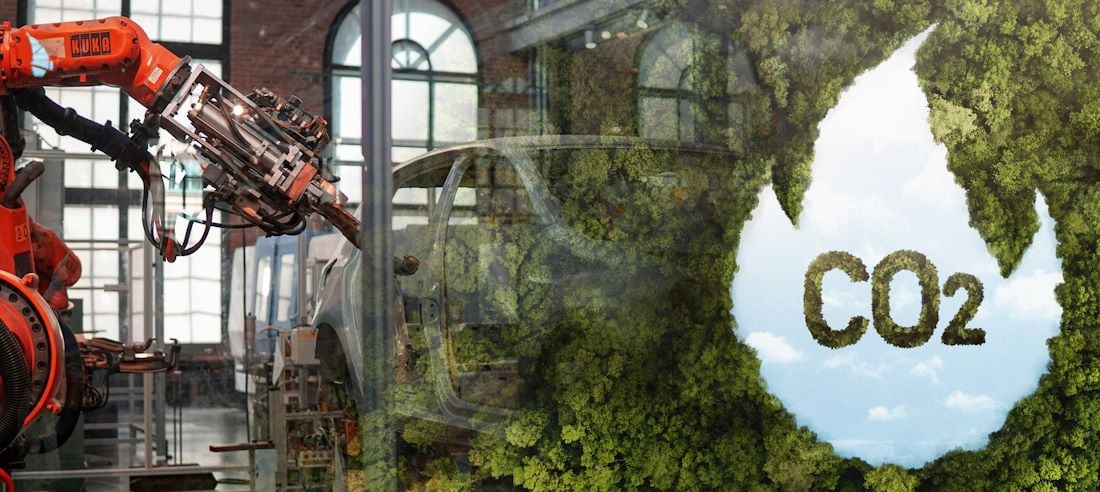By the end of the 20th century, a deep conceptual gap had evolved between a destructive economy devouring the declining resource base on the one hand and a poor, protection-needing environment on the other. However, this contradictory approach – economy vs. environment – is misleading. Even the most fundamental environmentalist has to admit that his or her participation in the market by consuming goods and services is inevitable. Well, there is of course a way to deny consumerism – subsistence lifestyles are possible, to a certain extent. However, in my humble opinion, it is virtually impossible to completely refuse your role as a customer if you grew up with all the comforts of a western society. It is of course a natural reflex to criticize “society” and “the economy” for the negative environmental effects they produce, but as long as you don’t grow in your own garden every single carrot you eat, as long as you don’t produce on your own roof every single kilowatt-hour your lights consume, as long as you don’t walk every single meter you travel, and as long as you don’t communicate every single word face-to-face – you should be aware that applying this criticism is nothing less than mere hypocrisy.
What Economy Do We Seek?
We are the economy – a truth that is more actual than ever before. The question is not “how can we boycott the economy” (the 1970 approach), because we would have to boycott our own needs first. Much rather, we should ask ourselves how to support the right economy (2013 approach). Companies that care. Products that work. With life cycles that function not only for a quarterly period, but rather for the next dozens of generations.
I’ve been digging into this matter for quite a while now. Various articles I published investigated ways to combine economic activity with environmental respect, each one from a different perspective. Material efficiency is an issue, of course. Today’s technology is capable of a five-fold efficiency increase! Don’t say it’s impossible, if you haven’t yet read Factor 5 or my corresponding summary. However, efficiency alone won’t save the planet. Summing it up, there are basically three approaches to a sustainable economy, all of which I touched upon in the article Better, Different, Less – Green Economy Revisited. Which one of them is most promising? In isolation, none. Only together can they lead the way: “A Balanced Mix of Technologies and Strategies” – The Sustainable Path is a Multi-Lane Highway. I know; all these discussions are kind of theoretical. In an attempt to put the strain back on the economy and our role as consumers, the most important questions are how a sustainable business is defined and how it can be measured. You knew it, no need to invent a thing. There are good practices around already. They are called integrated reporting, for instance, and in the respective article, I discovered How Business Can Transform Society through Serious Sustainability Communication.
What Society Do We Seek?
Only three weeks ago I showcased ten indicators capable of measuring green growth in industry. Very lucky I was, when the logical continuation to this article popped out of ecologic institute’s last newsletter. It is a project called IN-STREAM, which stands for Integrating Mainstream Economic Indicators with Sustainable Development Objectives. Need I say more? It draws the rather standard economic measures into a holistic perspective on sustainability, including society and politics.
In today’s article, let me introduce you to the highly complex matter of composite indicators, flip through three publications you can download at the project website, and show some results from IN-STREAM, a project that was conducted by a multi-disciplinary research group built with eight institutions from five European countries.
Tools to Choose the Right Indicator
Just as I already summarized in my article on green economy indicators, the IN-STREAM authors frequently pointed out that there is no such thing as the perfect indicator. Instead, they provided interested policy makers and prospective researchers with a toolkit to chose the most suitable indicator set for each particular context. The research report (PDF) says:
As the concept of sustainability is complex and multifaceted; developing a “one size fits all” sustainability indicator for the assessment of any given policy is not possible. Sustainability measures and indicators have to reflect the preferences and value judgements of policy makers and the public, which depend on the policy issue in question and may change over time. (page 5) […] Under the quantitative point of view IN-STREAM pointed out that, standard correlation analysis can already provide a useful support in indicator selection. Showing when and by how much two indicators are linked helps to avoid unnecessary duplications in the indicator set. Robustness/sensitivity tests are another powerful methodology to select indicators especially when one sustainability aspect can be measured by many of them. (page 74)
Composite Indicators: One Single Sustainability Score for Each Country
What’s most noteworthy, however, is the proposal of a new aggregated index called the “FEEM” Sustainability Index (FSI), dubbed after one of the institutions behind the project. One single sustainability index, one score for each country, composed of 23 different indicators from all three pillars of sustainability. Each of these indicators is weighted differently in order to contribute to the index score in an appropriate way. No need to mention that this method suffers a critical limitation: “[T]he subjectivity which is intrinsic to the construction of these indices (such as on the choice of the indicators and their related weights, and on the aggregation procedure) have led to significant criticism”, the authors wrote on page 6 of the above mentioned research report. The advantage of the indicators, in contrast, is clear: “composite indicators can be very effective tools in communicating overarching sustainability messages to non- experts”. Now how does this composite index called FSI work? What are the results? Which is the world’s most sustainable country?
Social Sustainability: The Poor Relation Pillar
Before looking into the results of the above mentioned composite sustainability index, we need to realize that not all three sustainability pillars have equally well-developed indicators. Whereas the two, more trendy pillars – economic and ecological sustainability – can be measured through an infinity of established or not so established indicators, not much thought has been given to social sustainability. According to the authors sociologists, in the past have mostly focused on ideologically motivated social desirability. Social sustainability, however, is a field that requires lots of future research. There are very few wide-spread indicators in this area. Subjective well-being (SWB) is one of these few, controversial but well-tried. This qualitative method is easy to understand: you basically ask a significant number of people how happy they currently are with their life and it seems as simple as that. Of course, the result is qualitative. What does that mean? Correlating qualitative results like “30% generally happy” or “15% very happy” with GDP is not feasible. However, when you spice the SWB up with a quantitative measure, like the country’s statistical life expectancy, you get an indicator called HLY, Happy Life Years. This indicator’s result is partly quantitative, one concrete figure, and thus very convenient for comparisons and correlations with other quantitative indicators like the GDP. The main criticism remains, however, be it SWB or HLY: it is too subjective. How can that be ruled out? By turning the approach around. Assuming there are measurable factors that correlate to happy people, why not measure these objective factors directly, instead of measuring their subjective outcome? In contrast to the other two, quality of life indicators (QoL) do this very thing. They measure the factors associated with well-being. One is the very well known HDI, Human Development Index: GDP per capita, plus health, plus education. The IN-STREAM authors suggest three more indirect indicators for social sustainability that correlate negatively – the higher the indicator scores, the lower the social sustainability. These factors are crime rate, corruption and long-term unemployment and they indicate lower social coherence, lower belief in institutions and inefficient structures – and eventually decreased well-being.
23 Weighted Indicators for One Sustainability Score
In their internal summary report (PDF) on “Literature findings and recommendations for linking SD and mainstream macroeconomic indicators”, published in March 2010, IN-STREAM authors Eva Hizsnyik and Ferenc Toth analyzed the most promising contemporary composite indicators, among them the Environmental Sustainability Index (ESI), the Wellbeing Index (WI), the Dashboard of Sustainability and the Ecological Footprint (EF). They came to the conclusion that all of them put a strong emphasis on only one, sometimes on two pillars of sustainability. In contrast, the FSI regards all three dimensions, as you can see in the following image:

The most important indicator is the relevance of food, weighted at over 12%. It describes the proportion of the personal income spent on food and assumes that the less money you spend on food, in comparison to your overall income, the higher your welfare. The second most important indicator is population density. The lower the density on inhabitable land, the more resources and living space are left per person. Note that GDP per capita is 7th to last on the list, but together with the 7 other economic indicators, this pillar makes up 34.8% of the index. For a complete description of all indicators, check out the FIS-pages of the namesake Fondazione Eni Enrico Mattei.
Scandinavia and the Alps Most Sustainable
And here is what you’ve been waiting for: The most sustainable countries of the world in the year 2011 are Norway, Sweden and Switzerland! All of Scandinavia’s four countries score in the top 6, separated by Switzerland and Austria at 3 and 4. Places 7-10 are held by Canada, France, Ireland and New Zealand. The differences from the per-capita GDP ranking can be seen in the following graphic, which refers to the year 2010 and therefore shows divergent results:

The most striking component of the FIS is its use to evaluate policy from a holistic standpoint. By modelling a policy’s impact on the indicators, future developments and trade-offs become apparent.
Politicians evaluating their decisions, consumers evaluating their choices, companies evaluating their potential – all from a holistic standpoint. Isn’t that a promising vision for 2013?
Further Reading
- Srebotnjak, Hizsnyik, Toth (2011): “Quantitative Analysis of Mainstream Economic Indicators and Selected Alternative Measures ”. Ecologic Institute , IIASA; IN-STREAM – The Integration of Mainstream Economic Indicators with Sustainable Development Objectives (PDF)
- Porsch, Lucas (2012): “Jetzt die richtigen Weichen stellen – Nachhaltigkeitsindikatoren und etablierte Wirtschaftsindikatoren verknüpfen”. Ökologisches Wirtschaften, Vol. 04/2012, 4.
- Lotter, Wolf: “Gut & reichlich – Alle suchen nach dem “guten Leben” – doch immer hört man: Das Materielle stünde dem im Wege. Verwechseln die neuen Glücksritter Ursache und Wirkung?” brand eins, Ausgabe 12/2012 (Link)
Article image by CC BY SA by dynamosquito. It shows three pillars of an antique palace in Pasargadae, Iran.





